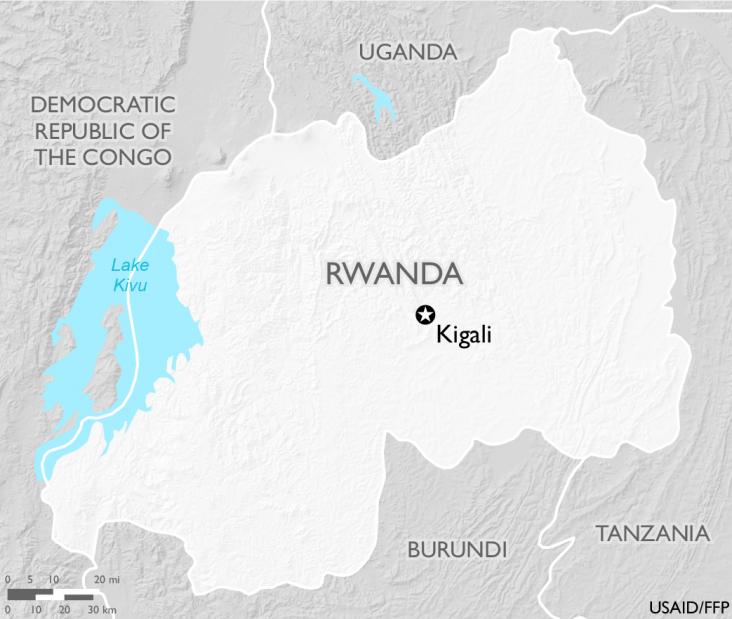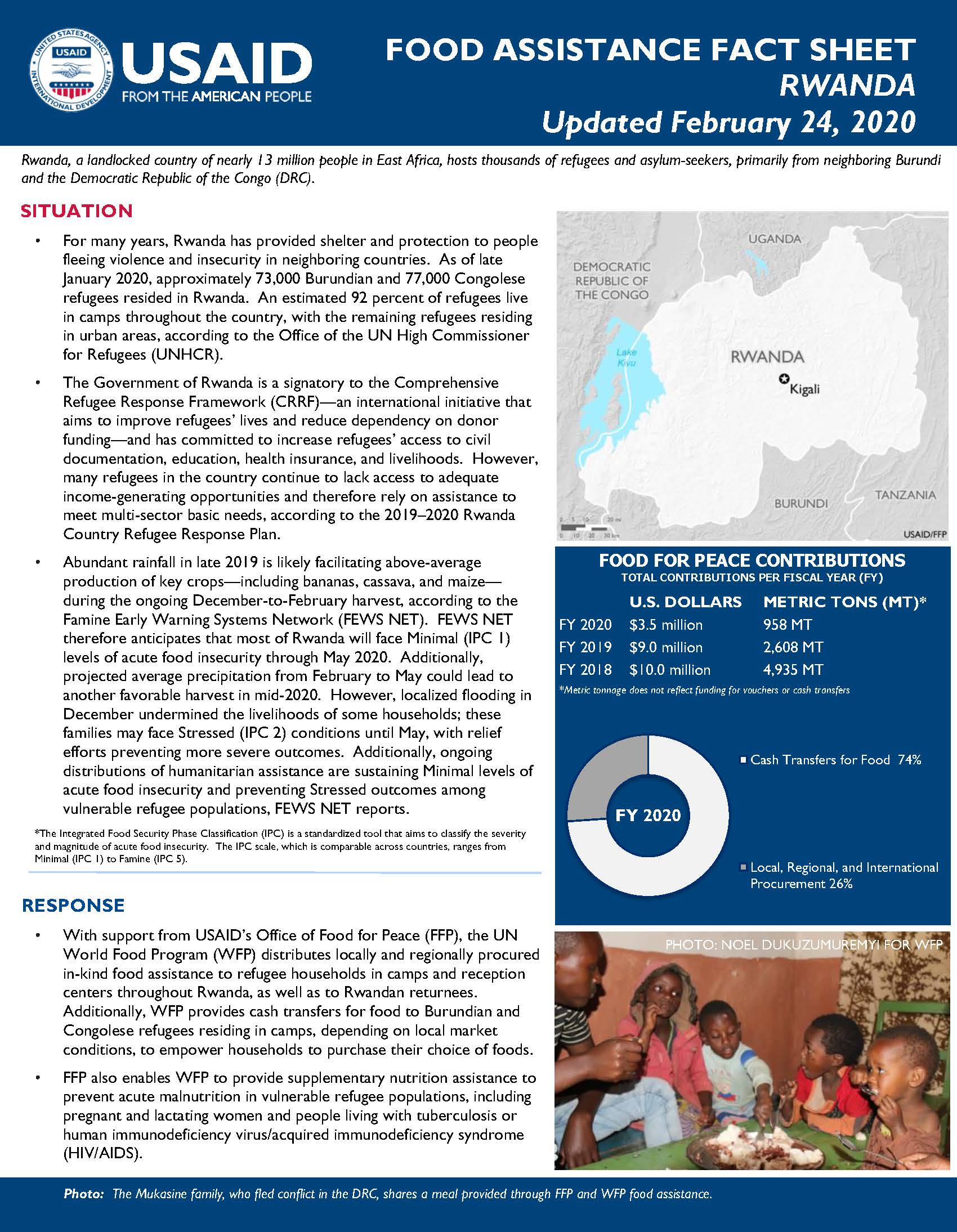- What We Do
- Agriculture and Food Security
- Democracy, Human Rights and Governance
- Economic Growth and Trade
- Education
- Environment and Global Climate Change
- Gender Equality and Women's Empowerment
- Global Health
- Humanitarian Assistance
- Transformation at USAID
- Water and Sanitation
- Working in Crises and Conflict
- U.S. Global Development Lab
Speeches Shim

February 24, 2020
Rwanda, a landlocked country of nearly 13 million people in East Africa, hosts thousands of refugees and asylum-seekers, primarily from neighboring Burundi and the Democratic Republic of the Congo (DRC).
Situation
-
For many years, Rwanda has provided shelter and protection to people fleeing violence and insecurity in neighboring countries. As of late January 2020, approximately 73,000 Burundian and 77,000 Congolese refugees resided in Rwanda. An estimated 92 percent of refugees live in camps throughout the country, with the remaining refugees residing in urban areas, according to the Office of the UN High Commissioner for Refugees (UNHCR).
-
The Government of Rwanda is a signatory to the Comprehensive Refugee Response Framework (CRRF)—an international initiative that aims to improve refugees’ lives and reduce dependency on donor funding—and has committed to increase refugees’ access to civil documentation, education, health insurance, and livelihoods. However, many refugees in the country continue to lack access to adequate income-generating opportunities and therefore rely on assistance to meet multi-sector basic needs, according to the 2019–2020 Rwanda Country Refugee Response Plan.
- Abundant rainfall in late 2019 is likely facilitating above-average production of key crops—including bananas, cassava, and maize—during the ongoing December-to-February harvest, according to the Famine Early Warning Systems Network (FEWS NET). FEWS NET therefore anticipates that most of Rwanda will face Minimal (IPC 1) levels of acute food insecurity through May 2020. Additionally, projected average precipitation from February to May could lead to another favorable harvest in mid-2020. However, localized flooding in December undermined the livelihoods of some households; these families may face Stressed (IPC 2) conditions until May, with relief efforts preventing more severe outcomes. Additionally, ongoing distributions of humanitarian assistance are sustaining Minimal levels of acute food insecurity and preventing Stressed outcomes among vulnerable refugee populations, FEWS NET reports.
Food Assistance Fact Sheet - Rwanda ![]() (pdf - 175k)
(pdf - 175k)
Response
- With support from USAID’s Office of Food for Peace (FFP), the UN World Food Program (WFP) distributes locally and regionally procured in-kind food assistance to refugee households in camps and reception centers throughout Rwanda, as well as to Rwandan returnees. Additionally, WFP provides cash transfers for food to Burundian and Congolese refugees residing in camps, depending on local market conditions, to empower households to purchase their choice of foods.
- FFP also enables WFP to provide supplementary nutrition assistance to prevent acute malnutrition in vulnerable refugee populations, including pregnant and lactating women and people living with tuberculosis or human immunodeficiency virus/acquired immunodeficiency syndrome (HIV/AIDS).
Food for Peace Contributions
Total Contributions:
| U.S. Dollars | Metric Tons | |
|---|---|---|
| Fiscal Year 2020 | $3.5 million | 958 MT |
| Fiscal Year 2019 | $10.0 million | 2,608 MT |
| Fiscal Year 2018 | $11.0 million | 4,935 MT |
*Metric tonnage does not reflect funding for vouchers or cash transfers.


Comment
Make a general inquiry or suggest an improvement.